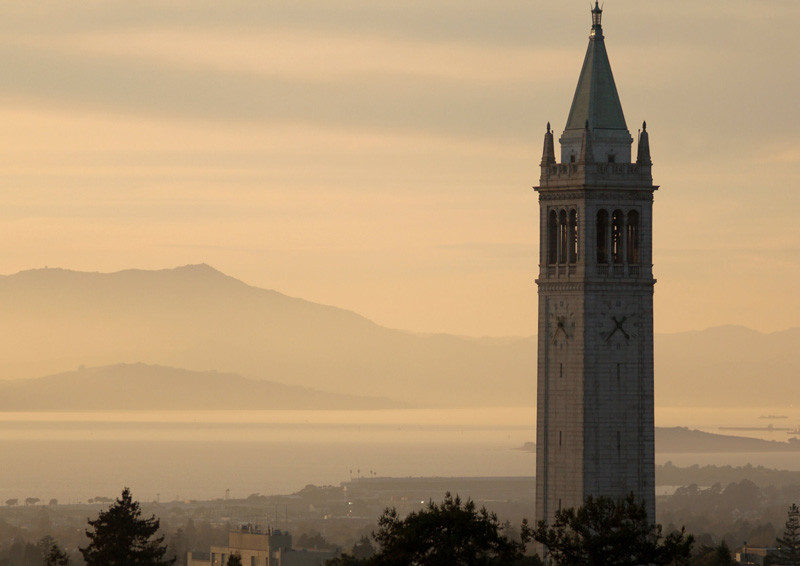When the bells of Sather Tower on the UC Berkeley campus ring out on the evening of Tuesday, Feb. 3, the sound will amplify the low rumble of the earth that most of us in the Bay Area prefer to forget.
In a project called “Natural Frequencies,” conceived by composer Edmund Campion, artist and roboticist Ken Goldberg and artist Greg Niemeyer—all UC Berkeley faculty—the bells are programmed to play a score composed in real time by the seismic shifts taking place along the Hayward Fault, directly below the Campanile. Accompanying the bells is a light show, also programmed to respond to the fault’s movements.
Seismologists predict the Hayward Fault as the source of a major temblor within the next three decades. If an earthquake were to happen during Tuesday’s performance, Campion says it would be more than apparent in the sound of the bells and fluctuation of the lights.
Granted, it’s unlikely that the performance, which marks the 100th anniversary of Sather Tower, will become a cacophonous soundtrack to crumbling buildings in the Bay Area. Most likely, viewers will simply hear the regular oscillations of the fault that occur every day, oscillations which Campion calls “very musical.”
As a composer, Campion has long been drawn to mixing acoustic instruments with emerging computer technology, “bringing together the old and the new,” as he says. Among his notable compositions is “Flow, Debris, Fall,” in which a ghostly, playerless digital piano was programmed to randomly generate music while an ensemble of acoustic musicians improvised along with it. The sound was what reviewer Kevin Berger, in the New York Times, called “stunning.”


